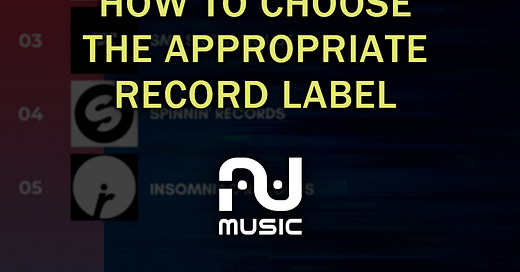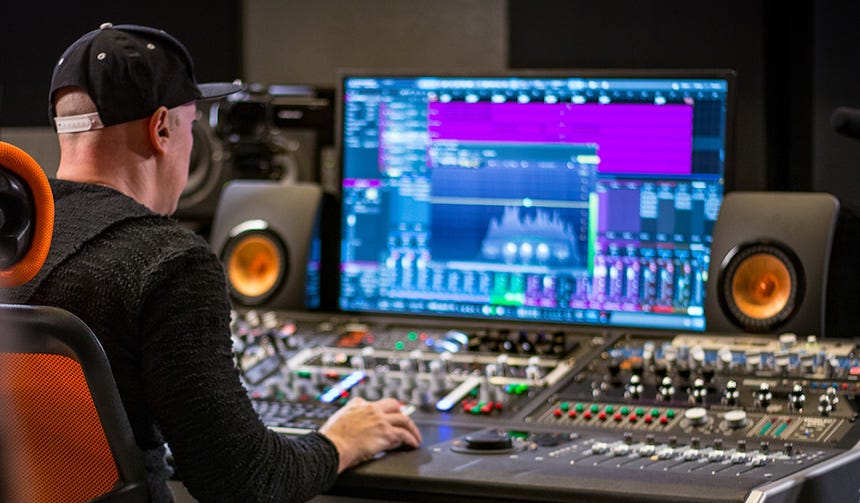How to Choose the Appropriate Record Label for Your Track
How to Choose the Appropriate Record Label
Choosing the right record label for your track can make a significant difference in your career as an electronic music producer. Here’s a practical guide to help you make the best decision:
1. Understand the Label and Its Identity
Before sending your demo, research the labels available and identify which ones align best with your track’s style. Listen to their releases and assess if your music fits their vision. This step is crucial and worth dedicating time to, as blindly sending demos can harm your reputation in the long run. Even within the same genre, labels often have distinct sounds and artistic directions.
A helpful tool for researching a label’s performance is BeatStats.com. This platform allows you to explore rankings of top record labels filtered by genre, time period, and more. It provides valuable insights into their relevance and standing in the industry.
2. Set Clear Priorities
Not all labels operate the same way or have the same level of reach.
If your track is more commercial and playlist-friendly, target labels with a strong focus on streaming platforms.
If your track is club-oriented and you want it to reach other DJs for their sets (or both), consider this when choosing a label.
Additionally, some labels organize their own events, which can be a bonus. Signing consistently with a label that hosts events might even open opportunities for you to perform at their showcases.
3. Be Realistic and Self-Critical
Producing a professional-sounding track takes years of practice and experience. Compare your track with the releases from your chosen label and determine if it meets their standards. If it doesn’t, consider starting with smaller labels that match your current level. This approach allows you to grow and improve incrementally.
4. Start Strategically
Begin by sending your track to top-tier labels or those you feel are the best fit for your music and goals. The more prestigious or influential the label, the harder it may be to get accepted, but it’s worth trying.
If you don’t receive a response or your track is declined, refine your approach by targeting smaller, more accessible labels. Always maintain high-quality standards and be realistic about your chances. Persistence is key, but so is strategic thinking.
5. Avoid Mass Submissions
Never send the same email to multiple labels, especially with all recipients copied in the same message. Send individual emails and tailor your message to each label as much as possible. Personalizing your submission demonstrates professionalism and significantly increases the chances of your demo being signed.
6. Prepare a Professional Demo
Your track should sound like a finished product. The better and more professional it sounds, the higher your chances of catching an A&R’s attention. Labels receive hundreds of demos daily, so standing out is essential. Never send an incomplete track or one with poor mixing.
Upload your track (in WAV or FLAC format) to a private SoundCloud link with download enabled. Include a brief description of your achievements without going into too much detail. Mention labels you’ve previously signed with, milestones like Beatport chart entries, and well-known artists who’ve supported your music.
You can also add links to your social media profiles so they can learn more about you as an artist. Keep your message concise and professional.
7. Be Patient and Persistent
Many labels receive hundreds of demos daily, so give them ample time to review your track and respond. If you don’t hear back or see that your demo hasn’t even been played (a common occurrence), don’t get discouraged. Move on to the next label on your list and keep trying. Consistency and resilience are key.
8. Remember: A Label Is Not a Charity
Record labels are businesses, and like any business, they aim to be profitable. If you sign with a smaller label, don’t expect them to run extensive promotion campaigns for your track. Often, it’s up to you to supplement the promotion and work to maximize your music’s reach.
Final Tip: Build Relationships
Engage with labels and their A&Rs on social media, attend events, or join online communities. Building genuine connections can open many doors beyond just sending a cold email.
Conclusion
Choosing the right label is a process that requires patience, strategy, and professionalism. By following these steps and continually improving your music and approach, you’ll be much closer to achieving your goals. Good luck with your submissions!
Reach out to us if you’d like help navigating this process.
NUMUSICPRO.COM







